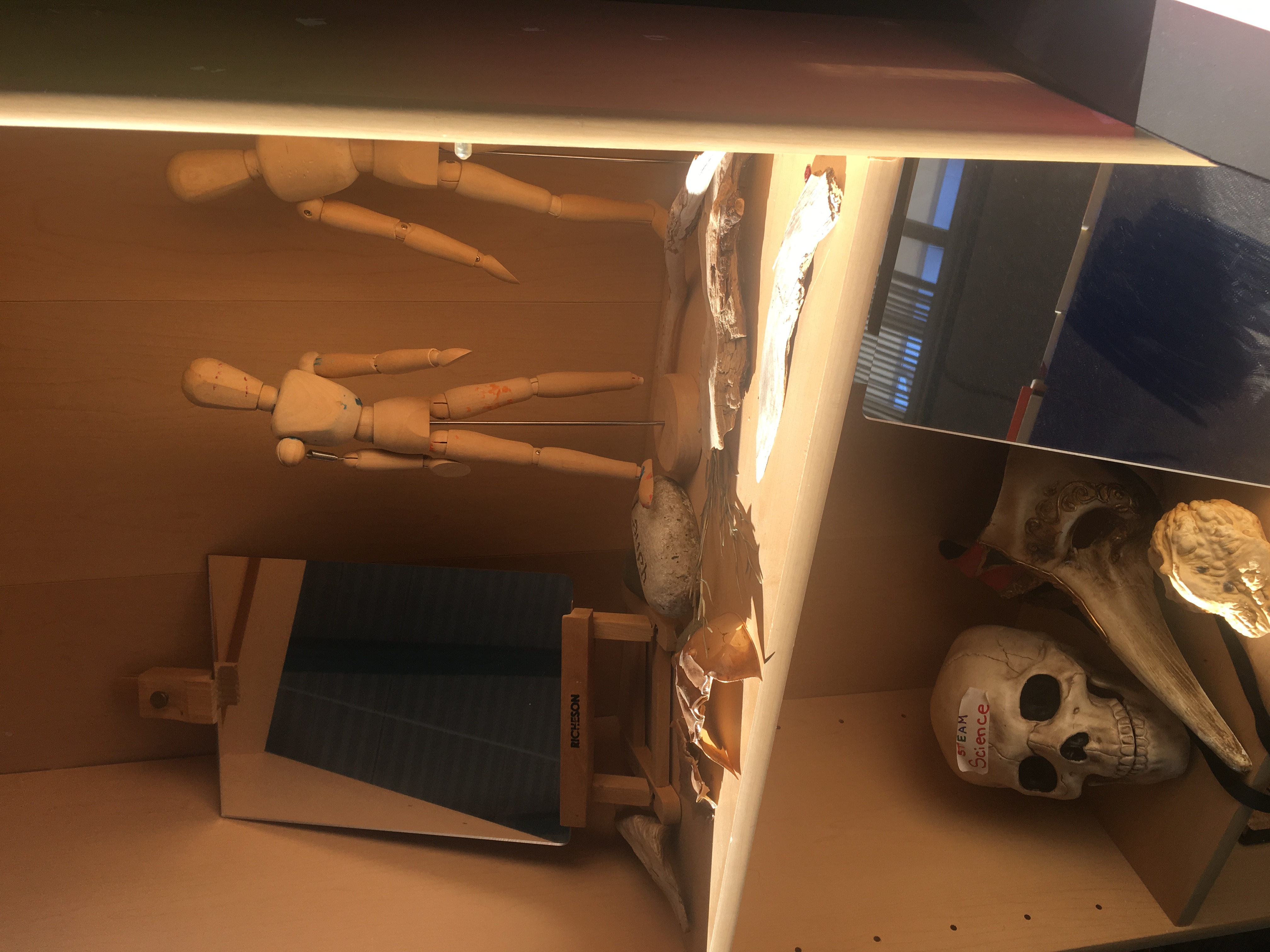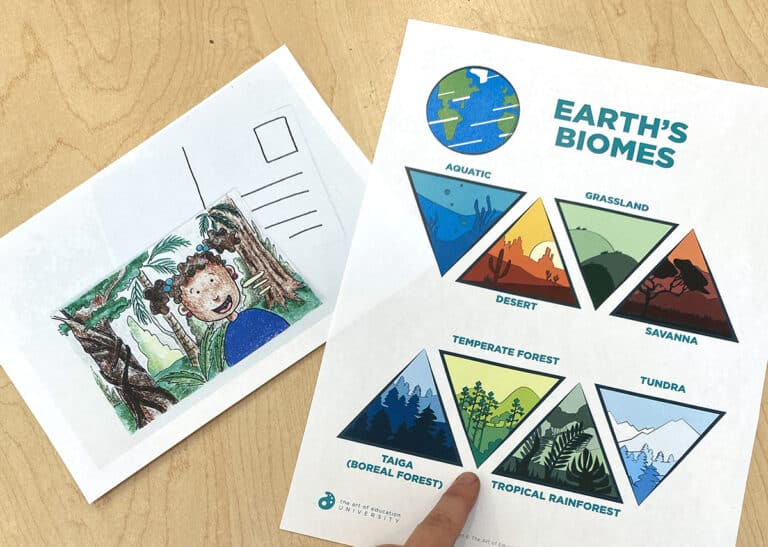One of the most common questions I’ve heard from AOE readers about Teaching for Artistic Behavior is, “How do I get started?” There are many resources out there for people who are interested in learning more about TAB and choice centers, (in fact, I’ve listed a bunch below!) but I wanted to demystify the process by sharing my experience. The first center that opens in my TAB classroom is the drawing center.
I wanted to share my five steps to opening that center.
1. Write Yourself a 5-7 Minute Script
I’m guilty of talking too much. There’s so much to say! But if you want to make time for student work, that means there is less time for teacher talk. Keep your demonstration under seven minutes by setting a timer.
When writing your script, remember you don’t have to tell students everything you want to say about drawing in one day. You can rely on one-on-one student interactions, your center’s lesson plan, and your resources to fill in the gaps.
2. Talk About how Artists Generate Ideas
The “grand opening” of the drawing center is all about how artists generate ideas. This will be a common thread students can come back to as they learn to be captains of their own artistic journey.

Discuss the question–What do Artists Draw?
- Artists draw what they see (observation)
- Artists draw what they remember (memory)
- Artists draw what they imagine (imagination)
- Artists draw what they feel (expression)
- Artists make marks (experiment)
You may want to show famous examples!

3. Introduce the Space
I begin by introducing students to the layout of the center. I discuss the parameters, available resources, and opportunities my students have. It might sound something like this:

“Here is where small paper lives. The limit for small paper is two pieces per week. Next to it is large paper. The large paper is for art that will last two or more weeks. Over here are drawing books, and here is where you can find reference images. Things you can use for observational drawing, or drawing where you look at an object while you draw it, are here. Everything needs to be returned to its correct place when you’re done.”
4. Demonstrate Materials and Tools
Using an easel and chart paper, I introduce drawing materials with a visual diagram. In the large center circle, I write DRAWING and each line points to a material.

I quickly demonstrate each material’s unique attributes while showing how they work. For example:
“Oil pastels are creamy and blend together when you overlap them.”
“Colored pencils can be dark or light depending on how hard you press.”
“Don’t forget to snap on the marker caps, click.”
5. Make the Center Part of Your Lesson Plan
Because you are only giving five minutes of instruction, your center needs to fill in the gaps.

- Make the materials and tools accessible and organized.
- Label materials with photos and words.
- Create menus of available tools and materials.
- Display famous artwork for inspiration.
- Create “how-to” posters or anchor charts for concepts you want students to try.
- Create a space for observational drawing objects, an image file, and drawing books.

I hope these ideas show you one way to open a drawing center. However, this is not the only way! There is a huge community of TAB teachers sharing out there, so browse TAB resources for drawing center ideas. I’ve listed a number of my favorite resources below. Each provides ideas other teachers have shared that you can adapt for your classroom. And remember, this is just a part of the process–you don’t have to have everything you want on the first day of class!

More Drawing Center Inspiration
- TeachingForArtisticBehavior.org
- Engaging Learners Through Artmaking by Katherine M. Douglas and Diane B. Jaquith
- The Learner-Directed Classroom by Diane B. Jaquith and Nan E Hathaway
- TAB resources on Pinterest
- Open Facebook groups such as Midwest TAB-Choice Art Teachers and Teaching for Artistic Behavior (TAB)
Do you have any ideas to share about drawing in a TAB classroom?
How do you teach drawing?
Magazine articles and podcasts are opinions of professional education contributors and do not necessarily represent the position of the Art of Education University (AOEU) or its academic offerings. Contributors use terms in the way they are most often talked about in the scope of their educational experiences.





